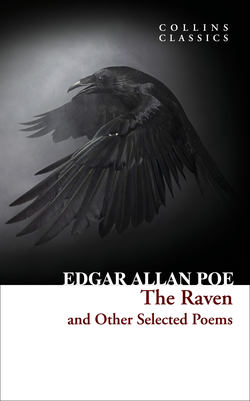Читать книгу The Raven and Other Selected Poems - Эдгар Аллан По, Marta Fihel - Страница 6
ОглавлениеLife & Times
About the Author
Edgar Allan Poe was an American writer of fantastical, bizarre and sometimes disturbing short stories. He lived and worked in the first half of the nineteenth century and died a mysterious death, many believe caused by an overdose of drugs, at the age of 40. It seems likely that Poe was himself inclined towards obsessive and unbalanced behaviour. As a child his father abandoned the family and his mother died shortly thereafter, leaving him an orphan. He was taken in by the Allan family; however, they endured a strained relationship and he became estranged from them when he failed to complete university and then to become an army officer. For the years that followed, he wrote poetry and then prose and became a literary critic, contributing to and working for many periodicals and journals of the time. In 1835, Poe married his 13-year-old cousin in secret, and ten years later wrote perhaps his most well-known poem, “The Raven”.
Poe’s work is usually described as “Gothic” in style, as he alludes to the macabre, grotesque and horrifying. Poe used the phrase “terrors of the soul” in explaining the primary focus of investigation in his prose and poetry. He was clearly preoccupied with delving into the darker reaches of the human psyche to see what he could find.
In the 1960s he became an influence on British pop music due to his highly imaginative literary imagery. The Beatles included a portrait of Poe on the cover of their 1967 album Sgt. Pepper’s Lonely Hearts Club Band and John Lennon mentions Poe in the song ‘I am the Walrus’, released later that same year. The Beatles were heavily influenced by experimentation with hallucinogenic drugs such as LSD (lysergic acid diethylamide) and many felt that reading Poe’s work was akin to the kind of psychological experiences elicited by hallucinogens. It may have been that Poe used them himself to enter his unique literary realm.
Prose Works
Tales of Mystery and Imagination was first compiled and published in 1908, some 59 years after Poe’s untimely death. There had been other canons of his writing, but this one focused specifically on the darker side of his work, omitting poetry and comic prose. Perhaps the most regarded of the short stories therein is The Murders in the Rue Morgue, originally published in 1841. In this story Poe invents the first literary detective, named Auguste Dupin, who sets about solving the mysterious double murder of a Parisian lady and her daughter in a street named Rue Morgue (Mortuary Street). A man has been wrongly accused and Dupin, having found an auburn-coloured hair, deduces a most unlikely culprit. Further investigation shows Dupin to be correct. The story is the first example of a fictional crime solved by the principle of deduction based on ingenuity, evidence and reason. It set the benchmark for later literary detectives, such as Sherlock Holmes and Hercule Poirot.
In The Fall of the House of Usher, originally published in 1839, Poe delves into matters of psychological illness, with the central character, Roderick Usher, suffering from all manner of mental disturbances. In Poe’s day, psychiatry had not yet defined specific conditions, but Roderick Usher had overly sensitive physical senses, an obsession with getting ill and was filled with extreme angst and anxiety about life. These days these symptoms would be classified respectively as hyperaesthesia, hypochondria and hysteria. Roderick Usher lives in a large house, where his sister has recently died and awaits being interred in the family tomb. The narrator of the story has come to stay with Roderick and witnesses various spooky events, whilst Roderick himself grows increasingly disturbed. The narrator reads Roderick a story to distract him, but this only serves to make things worse as the events in the story seem to embody themselves elsewhere in the house, and the narrator flees in fright.
Poetry
Though he was better known throughout his life as a literary critic than a poet, Poe wrote a number of poems in addition to his prose fiction. Like much of his prose, Poe’s poems tend to have a surreal, bizarre quality to them, as if they were the product of feverish dreams, and often tap into a darker way of looking at life. For instance the 1827 poem, “A Dream within a Dream” tackles the contrast between fantasy and reality, and “The City in the Sea” (1831) tells the story of a modern city ruled over by Death incarnate. The best known of Poe’s poetical works and his first critical success is the famous narrative poem “The Raven” (1845), which can be interpreted as an exploration of mental illness and madness. It depicts a prophetic raven visiting a man stricken by grief at the loss of his lover years before.
It has been suggested that Poe’s poetry has autobiographical elements: his life was troubled with spells of alcoholism and depression and marked by periods of intense activity and contrasting lows. In 1847, Poe’s wife Clemm died of tuberculosis. They had been together for twelve years and after her death Poe went into a decline. He became depressed and apathetic, turned to alcohol, and only a few years later came to the end of his own life. A man named Joseph Walker found Poe walking the streets of Baltimore in an incoherent and distressed condition. He was taken to hospital but his condition worsened and he died four days later. He had never been lucid enough to explain what had happened to him just prior to his death.
